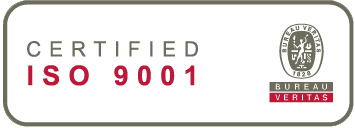ICL (Implantable Contact Lens)
ICL designs a procedure during which the surgeon inserts a small and thin contact lens in the eye, behind the iris and next to the natural corneal lens.
ICL is a common and alternative procedure performed worldwide by ophthalmologists, offering multiple advantages:
- Possibility to correct very high shortsightedness, farsightedness, and astigmatism when laser surgeries cannot be performed.
- No corneal tissue modification.
- Reversible procedure (by lens removal).
- Can be combined with some other eye treatments.
- Very quick and precise results (24 hours after surgery).
Detailed Steps of Implantable Contact Lens

Step 1. : Eye dilation
Dilation and anesthesia eye drops will be applied, a very small incision is created by ophthalmologist.

Step 2. : ICL implantation
ICL is inserted through the incision and placed in front of the natural lens in the eye.

Step 3. : ICL position
ICL is adjusted to place in a good position.
Who can be Candidate?
General Requirements
Rutnin-Gimbel ophthalmologists strictly apply Rutnin’s ethics in eye surgery and make sure first that any patient meets following general conditions, whatever the treatment could be:
- 18 year old minimum
- In good health overall
- Good eyes condition (no eye disease such as glaucoma, cataract, lazy eyesight, macular degeneration, severe dry eyes)
- No pregnancy, no breast feeding
- No auto-immune disease such as Rheumatoid Arthritis or SLE (Systemic Lupus Erythematosus)
- No variation of eyesight higher than 0.5 D within 1 year
More specifically, patient must meet the following conditions to benefit from an ICL implant:
Candidates for ICL Implantation
If the patient meets all prerequisite conditions, an ICL implant can be proposed as treatment for:
- Myopia, for refraction from -1D up to -18 D,(including astigmatism up to 6 D)
- Hyperopia, for refraction from +1D up to +10D, (including astigmatism up to 6 D)
- In some specific cases, when patients experience dry eye conditions or corneal abnormalities, such as early keratoconus
Rutnin-Gimbel ophthalmologist will determine during the thorough pre-operative examination if the eye conditions enable and require an ICL implant.





